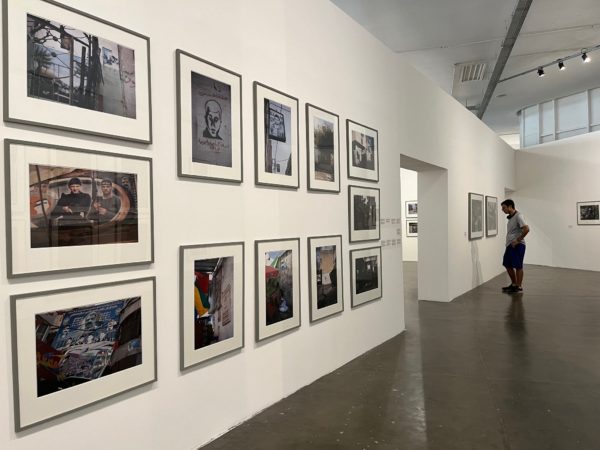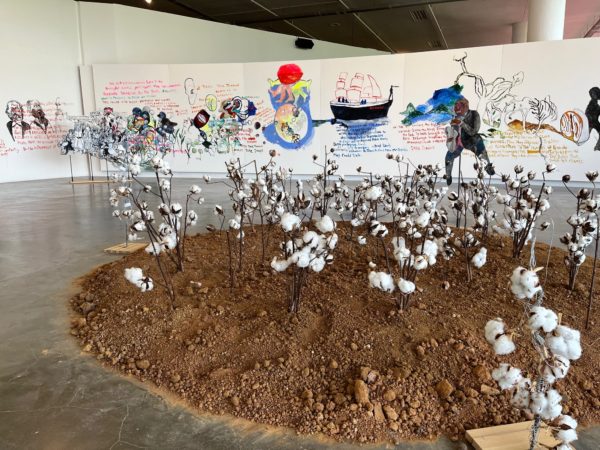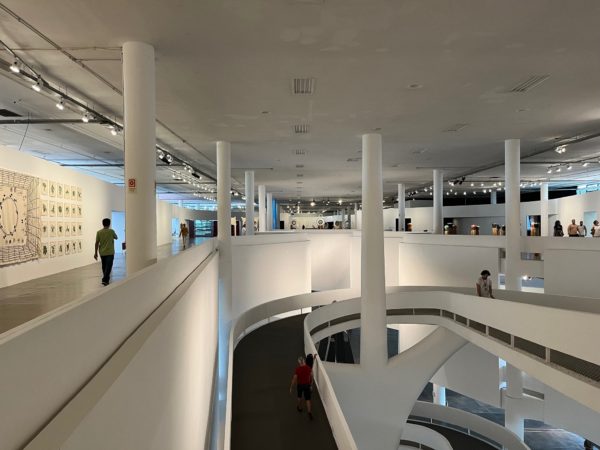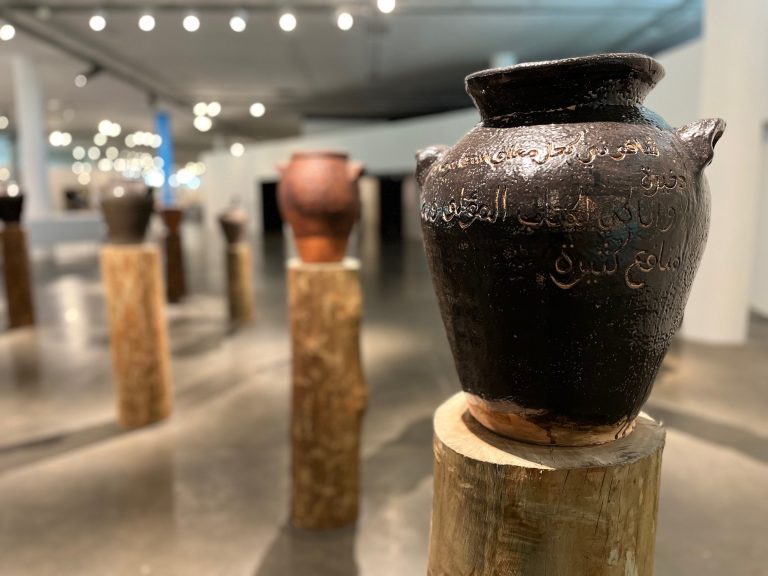São Paulo – The 35th São Paulo Art Biennial presents the public 1,100 artworks by 121 artists under the curatorial proposal “choreographies of the impossible” where the concepts pre-established from a Western perspective are challenged and called into question. In such context, artworks by artists from Egypt, Palestine, Morocco and Lebanon are shown across the Biennial Pavilion in the heart of the Ibirapuera Park.
The four-member curatorial team told ANBA that despite the selection of artists and artworks didn’t prioritize their origin, the participation of Arab-origin artists “enriches the show with unique perspectives and relevant life stories.”

“Their artworks directly contribute to the proposal of choreographies of the impossible by challenging cultural and geographic borders and exploring what’s possible within challenging situations. Each artist brings a unique point of view on art that’s manifested in their works, thus widening the discourses represented at the Biennial. Furthermore, the inclusion of Arab-origin artists shows the richness that the plurality brings to the contemporary arts and the experience of the Biennial,” curators Diane Lima, Grada Kilomba, Hélio Menezes, and Manuel Borja-Villel told ANBA.
A work by Palestine’s Ahlam Shibli is a series of photographies taken in the city of Nablus in the West Bank. Divided across three rooms, the show is called Death. In the 68 photographs, it represents the martyrs that have fought against the occupation of Palestinian lands through actions, graffiti, photos or diaries.
Egypt’s Anna Boghiguian criticizes the colonialism and the forms of exploitation of the land and the labor on her work Woven Winds – The Making of an Economy – Costly Commodities. A cotton plantation is surrounded by paintings and texts written on a panel that depicts time periods of the colonialism from the perspective of the cotton cultivated by enslaved Africans who were trafficked and then auctioned. The first part of this composition was made in 2016, but the mural that complements it was made especially for the Brazilian show.

In another project made for this Biennial, Morocco’s M’barek Bouhchichi presents verses by African and Brazilian and US Black poets engraved on ceramic vases (opening photo). The sayings talk about slavery and oppression, while the vases are inspired to US enslaved potter David Drake (1800-1870). Titled We Are the Ones that You Don’t Want to See, the project was realized in partnership with Sertão Negro, a studio and art school in Goiânia, Brazil.
The words and signs of the Arabic language are represented on big curtains hanging in the Biennial Pavilion that are usually employed to block the sunlight in the installation Sama’/Ma’as. Lebanon’s Mounira Al Solh uses this wordplay to form words out of the two sides of the fabric.
In another work made for this Biennial, The Camera of the Dispossessed by Palestinian filmmaker Kamal Aljafari claims Palestinian resistance against the occupation of their territories by reappropriating historical footage, fragments of videos made on cellphones, and personal archives. The result is a portrait of the occupation and the Palestinian struggle.

Another commissioned work is the video installation A Seasonal Work Song by Morocco’s Nadir Bouhmouch and Soumeya ait Ahmed. By portraying an apple crop accompanied by the song of laborers, the artwork refers to other works by the filmmaking duo that address the orality and popular culture. This video installation stands out from others in the show as it’s put at the center of the pavilion, surrounded by black and transparent fabrics displayed in a circular form. The reason: the work is supposed to remind of an assembly at a public square.
In the video The Corbeaux [Crows] (2017), Morocco’s Bouchra Ouizguen stages a choreography in a desert. The Arab culture and history are also represented in the works of Cyprus’ Philyp Rizk, who lives in Cairo, and French Moroccan Yto Barrada. Rizk presents a video installation of films depicting two moments of the opening of the tomb of Tutankhamun in Egypt, in 1922 and 1924, while Barrada uses wood blocks with drawings painted on to refer to the Frech occupation of Morocco.
The curators told ANBA the Biennial sought to widen the cultural and artistic perspectives by the challenging the traditional narratives of the time. Consequently, they said, this resulted in a plurality of research curatorial research and interests. “The presented works offer a multiplicity of world experiences and views, thus creating news perspectives on the emergencies of the contemporary world. This enriches the Biennial by encouraging intercultural dialogues and serving as a platform for powerful voices to echo their worldviews,” said the curatorial collective.
Arab or Arab-related topics like diaspora and dislodgement are evidenced in artworks by artists from other nationalities and origins that are present at the Biennial, including some Brazilians. And some of the choreographers, painters, sculptors and filmmakers that were born in Middle East and North Africa states now live in European capital cities like Paris, Amsterdam and Berlin or New York, the United States. They all present the visitors of the Biennial with the proposal of the contemporary art as a building element based on the interpretation of those who interact with it.
Quick facts
35th São Paulo Art Biennial – choreographies of the impossible
Curatorship: Diane Lima, Grada Kilomba, Hélio Menezes, and Manuel Borja-Villel
Through December 10, 2023
Ciccillo Matarazzo Pavilion
Ibirapuera Park – Gate 3
Free Admission
Find out more
Translated by Guilherme Miranda




